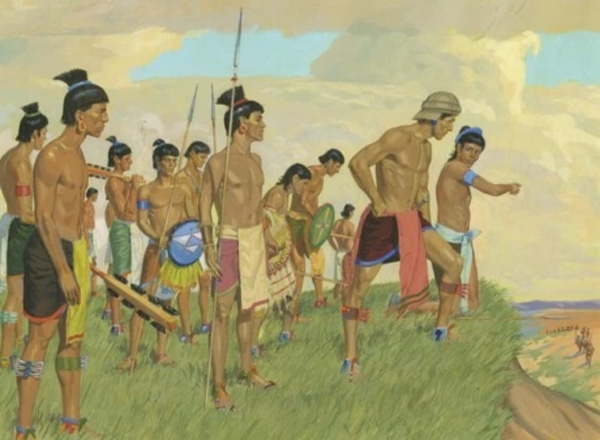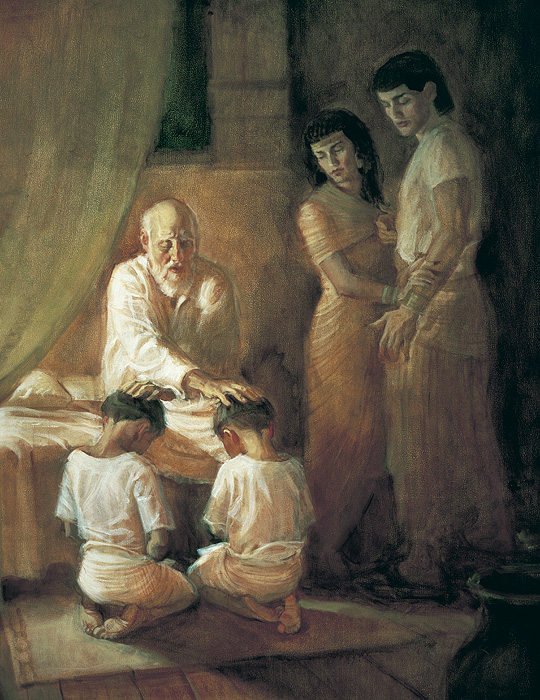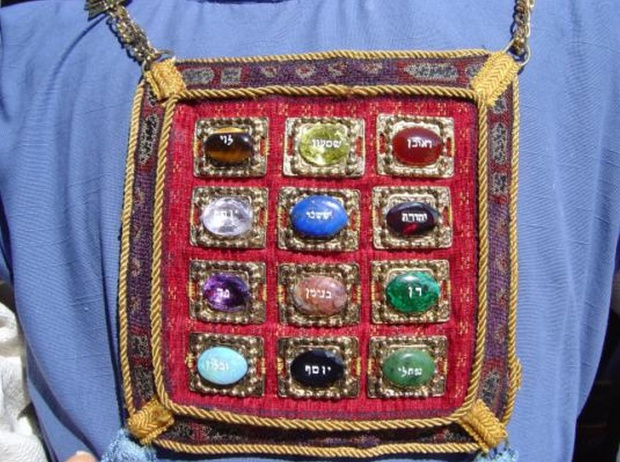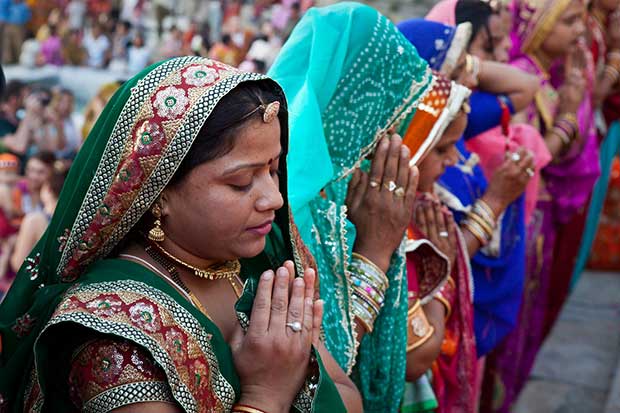Question
Gramps,
I heard there were three classifications of Lamanites: Native Americans, Polynesians, and Latinos/Hispanics. Are they considered Lamanites? Probably not all of those people are descended from Book of Mormon people. Are they considered to be Lamanites? I recently found out I am nearly a quarter Native American, and possibly there is a trace of Polynesian. Am I a Lamanite?
Shasta
Answer
Shasta,
The Book of Mormon describes the Lamanites as descendants of Laman, the elder son of Lehi, who left Jerusalem around 600 B.C. with his family. According to the text, the Lamanites were often in conflict with the Nephites, descendants of Lehi’s other son, Nephi. The narrative portrays the Lamanites as a people who rejected the teachings of their father and became adversaries of the Nephites, leading to a long history of warfare and cultural division.
Historically, early members of the Church believed that the Lamanites were the principal ancestors of the American Indians. This belief was reflected in the 1981 version of the Book of Mormon’s introduction, which described the Lamanites as “the principal ancestors of the American Indians. However, this assertion has been revised in more recent editions, which now state that the Lamanites are “among the ancestors of the American Indians. This change reflects a growing recognition of the complexity of Native American ancestry and the need for a more nuanced understanding of the Lamanites’ role in that history.
The shift in the Church’s narrative regarding Lamanite ancestry is not merely a matter of semantics; it represents a broader evolution in the understanding of identity and ancestry within the context of the Book of Mormon. Scholars within the Church have long debated the implications of DNA research on the historical claims made in the Book of Mormon. For instance, some have argued for a “limited geography” model, suggesting that the events described in the Book of Mormon occurred in a specific region of the Americas, rather than across the entire continent. This perspective allows for the possibility that other populations existed alongside Lehi’s descendants, complicating the notion of a singular Lamanite ancestry.
Modern genetic research has posed significant challenges to the traditional understanding of Lamanite ancestry. Studies have shown that there are no known genetic markers in Native American populations that connect them to people from the Middle East, where Lehi and his family originated. This raises the question: if the Lamanites were indeed a significant ancestral group, why is there no detectable DNA evidence linking them to contemporary Native Americans?
Several factors complicate the detection of Lamanite DNA. First, the concept of “Lamanite” identity as presented in the Book of Mormon is not strictly tied to genetic lineage. The term encompasses a broad range of peoples, including those who may have intermarried with Lamanites or adopted their identity for cultural or political reasons. This fluidity of identity makes it difficult to pinpoint specific genetic markers associated with the Lamanites.
Additionally, genetic drift and population bottlenecks over centuries can obscure ancestral connections. As populations grow and intermingle, the genetic signatures of specific groups can become diluted or lost entirely. A 2006 statement from the Church acknowledged that “nothing is known about the DNA and the Book of Mormon people,” and that due to these genetic complexities, it is unlikely that Lamanite DNA could be detected today.
The implications of these genetic findings are profound. They challenge the traditional narrative that has linked Native Americans directly to the Lamanites and raise questions about the historical accuracy of the Book of Mormon. However, it is essential to recognize that the absence of genetic evidence does not necessarily negate the existence of the Lamanites as described in the text. As geneticist Ugo Perego noted, while the DNA of Book of Mormon peoples may have disappeared or not been detected, this does not mean that such people never existed.
Moreover, the evolving understanding of identity within the Church reflects a broader trend in society toward recognizing the complexity of ancestry and cultural heritage. Many Latter-day Saints now acknowledge that modern Native Americans may have diverse ancestral backgrounds, including influences from various indigenous groups that predate Lehi’s arrival in the Americas [8]. This recognition aligns with the Church’s current stance that the Lamanites are “among the ancestors” of Native Americans, rather than their sole progenitors.
The legacy of the Lamanites extends beyond questions of genetic ancestry; it encompasses cultural and spiritual dimensions as well. For many Latter-day Saints, the Lamanites represent a significant part of their faith’s narrative, embodying themes of redemption, faith, and the potential for spiritual awakening. The Book of Mormon speaks of a future time when the “scales of darkness” will fall from the eyes of the Lamanites, allowing them to embrace the gospel and reclaim their heritage.
This vision of redemption has inspired numerous missionary efforts directed toward Native American populations, with Latter-day Saints often viewing themselves as modern-day “gatherers” of Israel. The Church has historically emphasized its responsibility to support Indigenous peoples, including through missions to Indian reservations and Latin America. This sense of duty reflects a belief in the spiritual significance of the Lamanites and their role in the unfolding narrative of the gospel.
The interplay between faith and reason is a central theme in the discussion of Lamanite ancestry. While scientific findings may challenge traditional beliefs, they also provide an opportunity for deeper exploration and understanding. Many Latter-day Saints have come to see faith and reason as complementary rather than contradictory, allowing for a more nuanced approach to the complexities of ancestry and identity.
As the Church continues to navigate these discussions, members need to engage with both their faith and the insights offered by modern scholarship. This engagement can foster a richer understanding of the Book of Mormon and its teachings, as well as a greater appreciation for the diverse heritage of Native American peoples.
Reference: DNA and the Book of Mormon
Gramps







